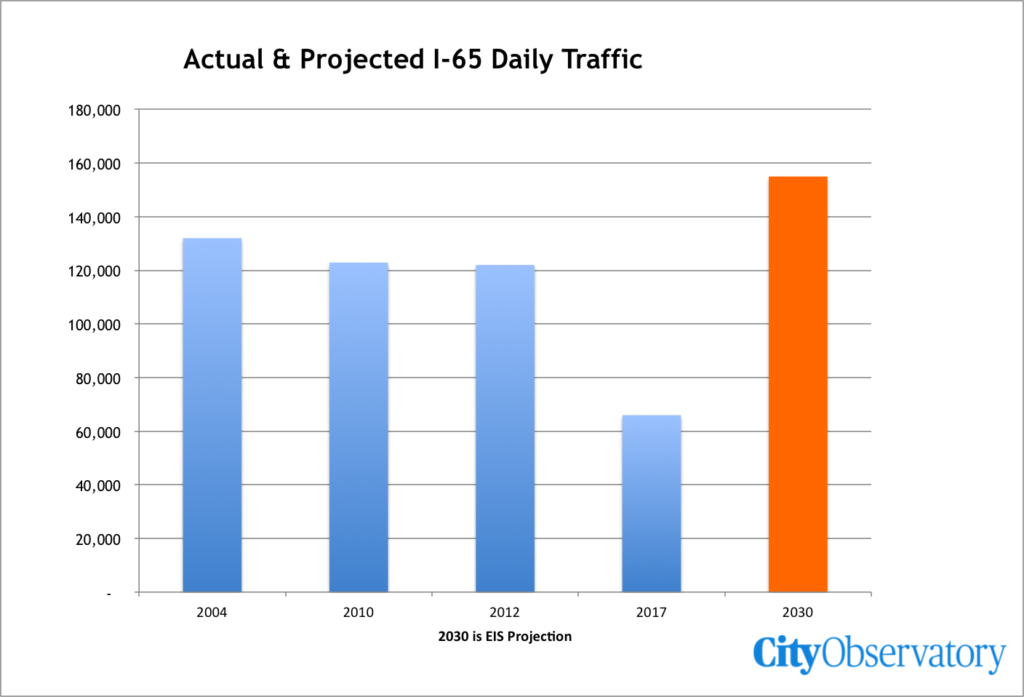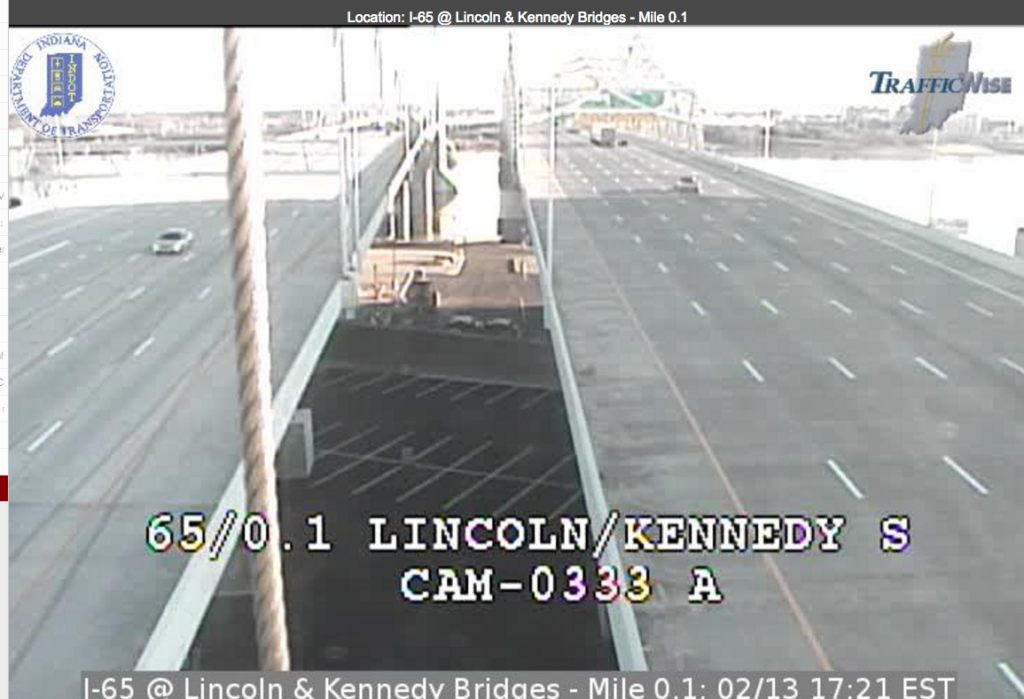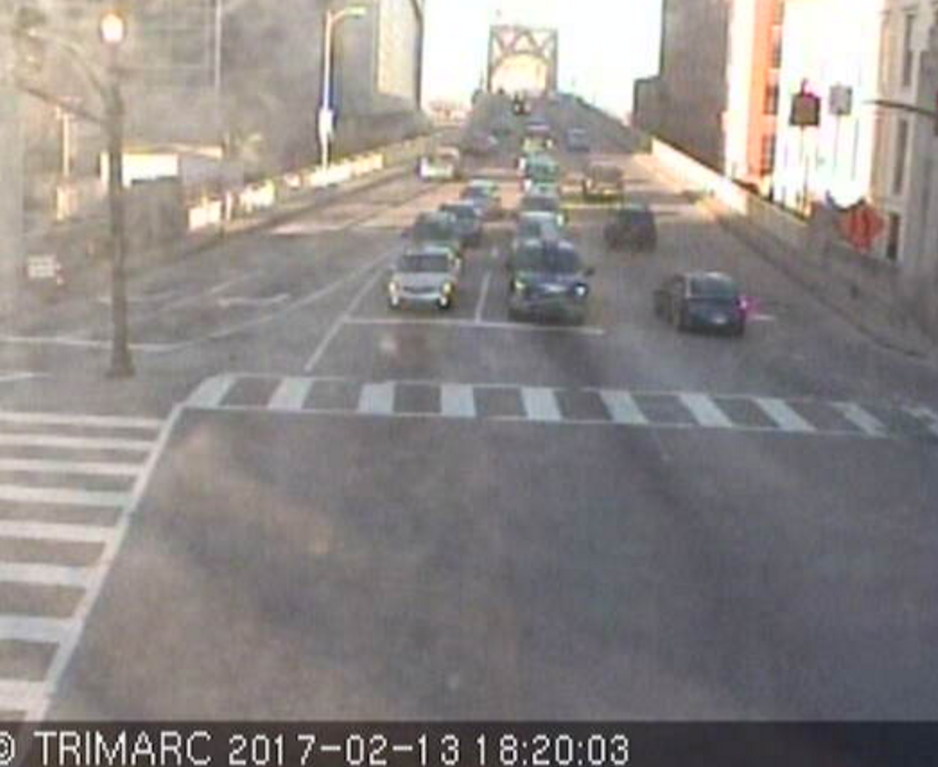Tolls cut traffic levels on I-65 in half; So did we really need 6 more lanes?
Last month, we wrote about Louisville’s newly opened toll bridges across the Ohio River. As you may recall, Ohio and Indiana completed a major expansion of highway capacity across the Ohio, doubling the I-65 freeway crossing from six lanes to twelve near downtown and adding a beltway bridge to complete the freeway loop around the region. To pay help pay for the multi-billion dollar project, the two states imposed tolls ranging from $1-4 for cars using I-65 and the new East End/Lewis & Clark Bridge.
But travelers through Louisville still have a toll-free river crossing alternative, the old four-lane Clark Memorial (Second Street) Bridge, just a few hundred yards downstream from the larger newer toll bridges, continues to be free.
In our earlier commentary, we speculated that the addition of tolls to the freeway bridge, coupled with the presence of a nearby free alternative would dramatically reduce car traffic. In the absence of any actual data, we took our first cues on what was happening from rush hour traffic cams showing cars on the I-65 and Second Street Bridges. The tolled freeway bridges were nearly empty, and the Second Street Bridge looked pretty busy. That seemed to confirm our hypothesis. Nonetheless, several readers took us to task for not waiting until we had actual traffic counts. Well, now we do.
And they confirm what the traffic cameras were telling us: traffic is very light on the newly tolled freeway crossing. The data from Riverlink (the joint Indiana-Kentucky toll operator) show that average weekday traffic on the two bridges was about 66,000 vehicles per day in January. To put that number in context, it is about half the level of traffic (122,000 vehicles per day) that used I-65 in 2012–before the new Lincoln Bridge opened. To put that a slightly different way: the two states spent over a billion dollars to double the capacity of the I-65 crossing, and now it is used by about half as many vehicles as used it before.
Source: Riverlink, February 1, 2017
This is important because the principal objective of the Ohio River Bridges Project, according to the “purpose and need”: spelled out in its environmental impact statement was to reduce traffic congestion. Unless the river crossing was expanded, the EIS claimed, traffic would have increased to 155,000 vehicles per day, more than 23 percent over capacity, by 2030. Now its apparent that with tolling, traffic is actually unlikely to rebound to pre-construction levels.

There’s a lot more to dig into here. One of the big unanswered questions is has tolling I-65 worsened traffic congestion elsewhere in Louisville, particularly on the un-tolled Second Street bridge and nearby streets. Because Riverlink doesn’t toll this bridge, they don’t have data on traffic levels–so we’ll have to wait until traffic counts are published by the two states.
But for the record: one more set of photos of traffic over the I-65 and Second Street Bridges. These were taken Monday afternoon February 13 at about 5:20 PM, from the local “TRIMARC” traffic monitoring website.
First, traffic on the tolled Kennedy and Lincoln Bridges (Camera 0333A).

Next, here’s an image of traffic coming off the Second Street Bridge as it enters downtown Louisville. This picture was captured at 5:25 pm EST (despite the time-stamp on the camera).

The data and the traffic cam photos suggest that Louisville has demonstrated a powerful, fast-acting solution for reducing traffic congestion: charge a toll. It’s too bad they found out only after spending in excess of a billion dollars building new road capacity that apparently wasn’t needed or valued by those who travel across the Ohio River each day. Maybe other cities can learn from the Louisville’s expensive experiment.

